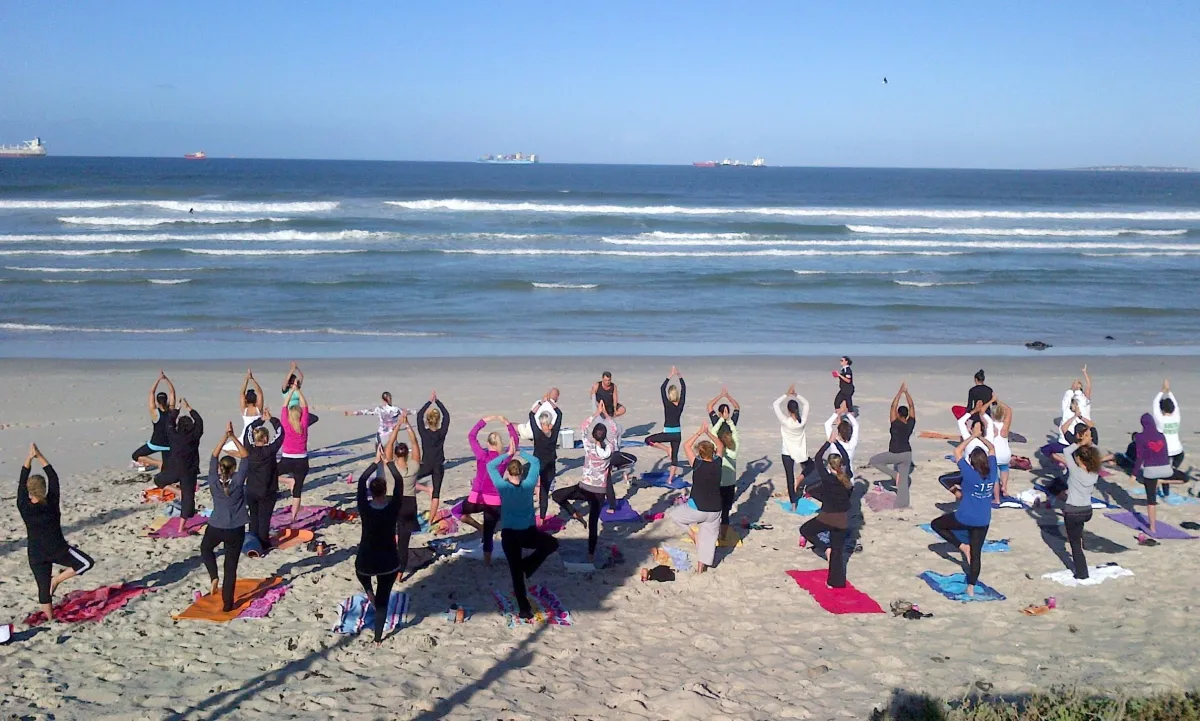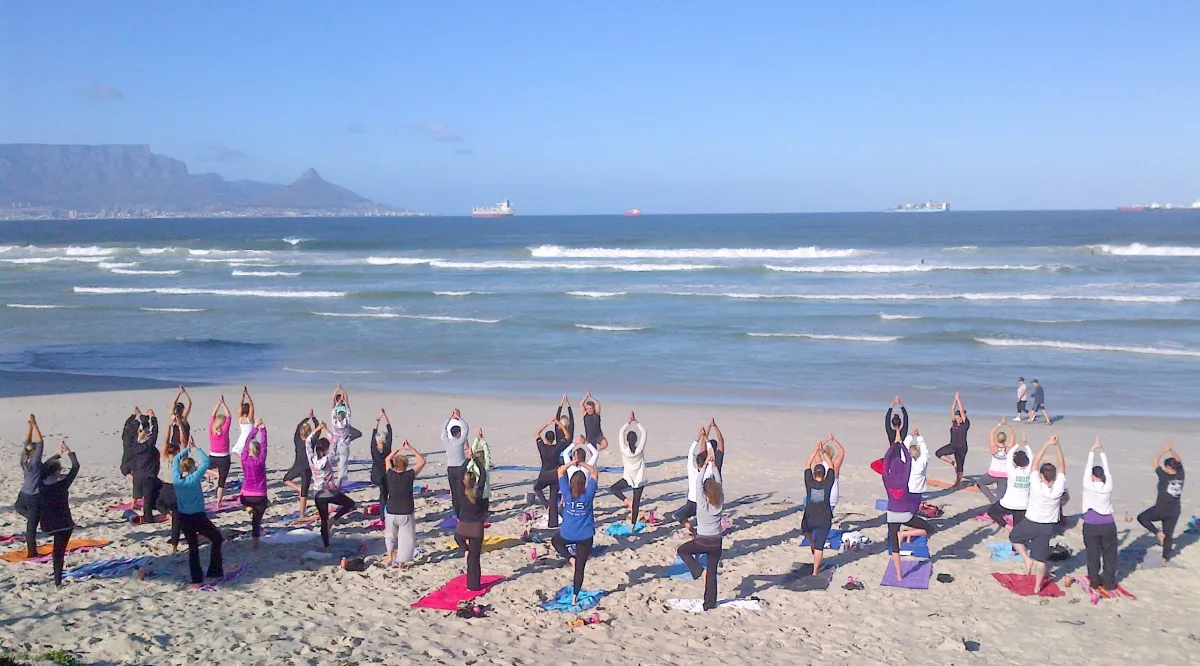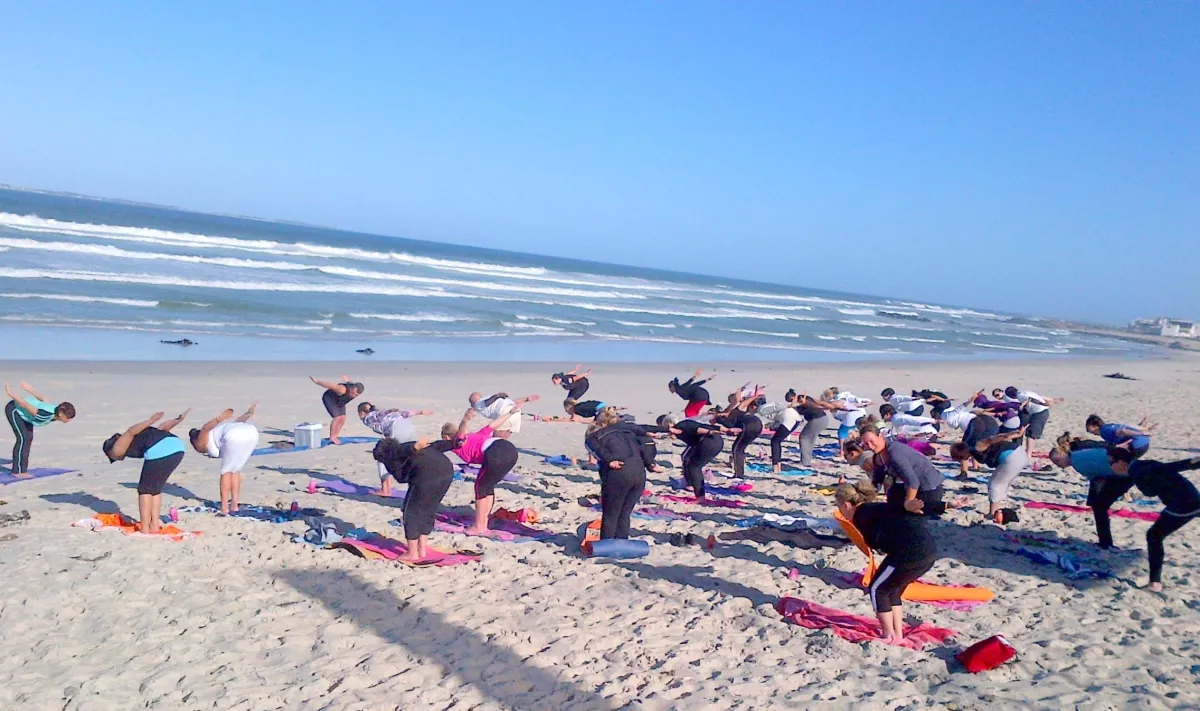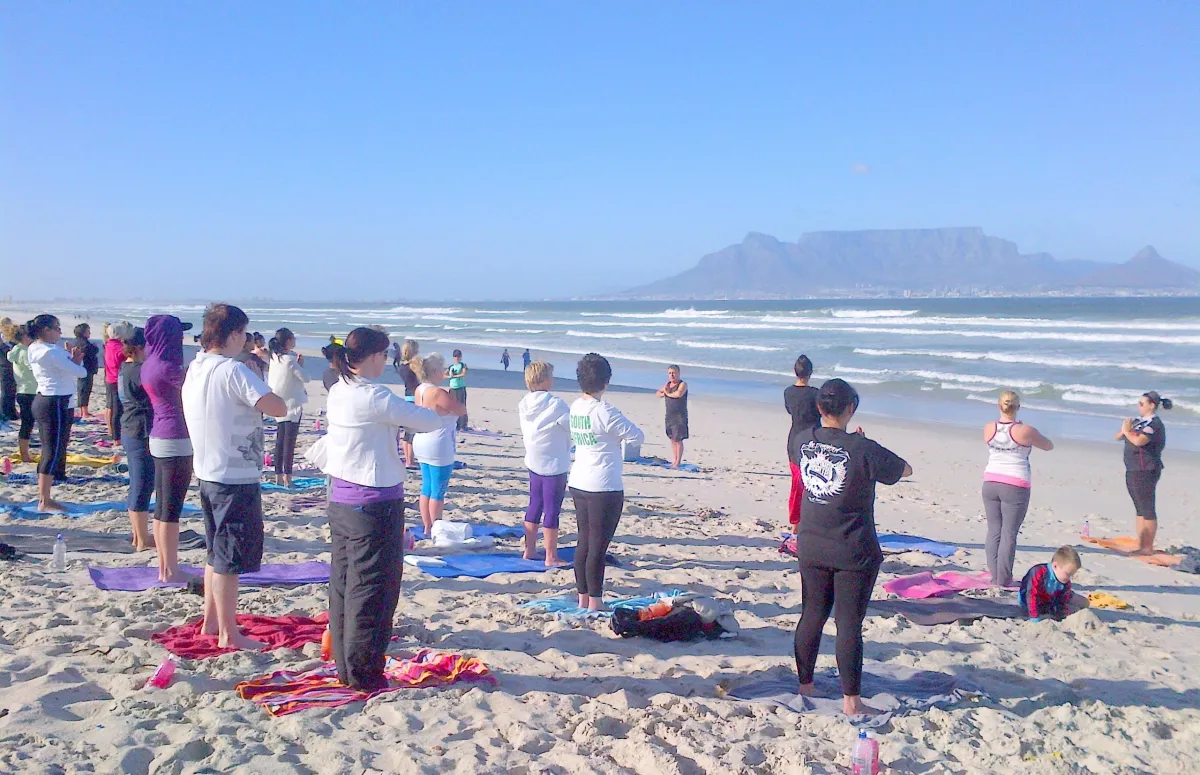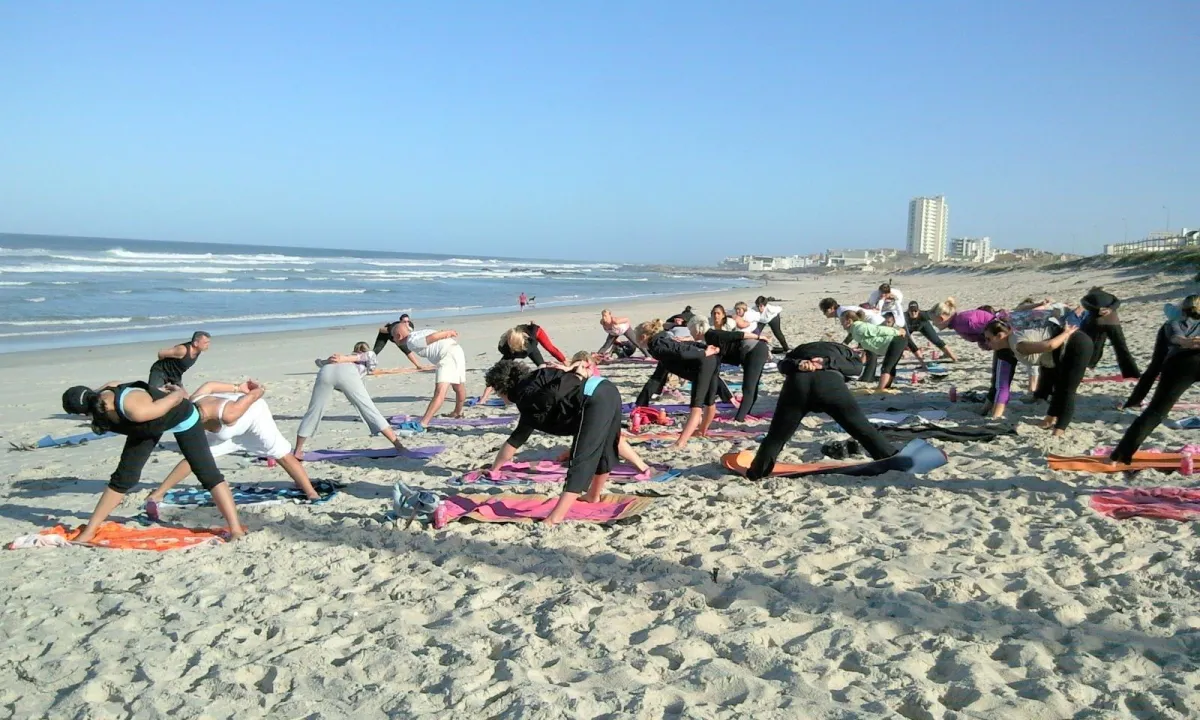About us
YOGA IS POSSIBLE FOR ANYBODY WHO REALLY WANTS IT
HOME / About Us
Our Spiritual Guides and Teachers, Approach and Beliefs at Chaitanya School of Yoga
“There are two ways to life your life. One is as though nothing is a miracle. The other is as though everything is a miracle.” ~Albert Einstein

ROSALYNE - Founder of Chaitanya School of Yoga
Rosalyne started her practice of yoga inspired by the books of Swami Shivananda and Yogananda in 1989, being a guest seeker at Osho Ashram where she received initiations and Mantra Diksha in Tantra, Hatha and Kundalini Yoga, Mantra and Yantra meditations techniques. From the beginning of 90's she continued her studies and practice of yoga on a regular basis, daily, in large groups and ashrams in Europe and later in Asia, thus becoming an experienced yogini and spiritual guide, with over 20 years of experience* (proven personal results of practicing yoga) in Hatha, Kundalini, Kriya and Tantra yoga, Meditation, being well knowledgeable of Jnana yoga and Advaita Vedanta.
Through her spiritual practice, she has acquired a penetrating insight into the nature of being and existence, thus what she is sharing is not "books letter texts ", but her experiential and direct spiritual knowledge via highly efficient methods explained in modern terms, designed to allow one to transcend the daily existence and integrate it with success into the subjective existence.
Throughout the years, she has specialized in solitary retreats, and dark room retreats 3-12 days, following the example of her Jnana and Advaita Vedanta teachers, Ramana Maharshi and other Jnâna Yogi, who consider the solitary retreat as the last and the most important in Yoga practice.
When traveling and living in Japan, Singapore, South Korea, Taiwan, Rosalyne began her journey on the path of Buddhism, practicing their methods for years in Tokyo and Kamakura, Singapore, Seoul, sharing at the same time her knowledge in yoga with her Asian friends and students.
Rosalyne has reached high states of spiritual realization, being able to offer a proven path to spiritual accomplishment and she does it in well-understandable and modern concepts, without the usual mystification which come with this sort of information. She is among those "Old school "spiritual guides well trained in Kundalini Yoga, Advaita Vedanta or Ayurveda, as well as in the highly spiritual Tantra Yoga, Kashmir Shaivism, Kriya Yoga, Tibetan and Zen Budhism, having the ability to give a comprehensible representation of the world's spirituality in a modern and practical form.
Being among those exponents of a modern trend of thinking in Yoga, teacher of true ancient knowledge of India and Tibet, she is able to guide safely adepts toward and into the highest stages of Yoga, which culminates with Kundalini awakening and Siddhis, Samadhi and Enlightement, without failing. Her studies are of literature ( journalism) and psychology , and her interests of quantum physics and mechanics, philosophy of religions, specializing in Ayurveda, Tantra and Kriya Yoga, Kashmirean Shavism and Mantra meditation.
She is a writer and an inspired poet , her mystical and philosophical essays and poems inspire the minds and hearts of the readers, giving them insight in the ways and heights of the heart and mind of a spiritual person.
In the last period Rosalyne doesn't teach anymore large groups, choosing Yoga therapy for private and small groups of people in need of Yoga, and preparing new Yoga teachers to know the highest and real science of Yoga, beyond the all visible "gym yoga" trends, following the "Integral Yoga Teachers Training" course program, that she and Laurence created.
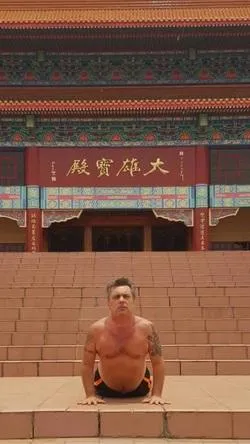
LAURENCE - Founder and Director of Chaitanya School Of Yoga
Co-founder with Rosalyne, and Director of Chaitanya School Of Yoga in South Africa, LAURENCE has studied Hatha yoga,Vinyasa , Yin Yoga , Yin Yang Yoga , Mantra and Yantra Yoga (Raja), Tantra, Kundalini, Tibetan Yoga and Tibetan Vajrayana Buddhism, being a Master Yoga teacher and an inspiring spiritual guide . Gifted with a strong will-power, mental clarity, and deep intuition, he possesses what is called "genius of heart'', a genius of a pure consciousness, which makes him calm and tireless throughout his busy day and schedule, always smiling and happy, he inspires by his personal example , easy to talk to and very knowledgeable on most subjects from yoga and sports to real estate market and finances, many times with a great sense of humor and kindness.
Laurence discovered the science of yoga after having suffered for many years with alcohol addiction, and whilst in rehab discovered the science of Yoga, Thai Chi , Chi Gong, and Vipasana (Zen meditation) , which has helped tremendously in his recovery. Now over 20 years free of any addictive substances Laurence has found a new way of life and thinking and wants to share his experiences with people who have or are suffering the same fate.
He has dedicated his life to opening a new way for those desiring light and new horizons , guiding others along this pure spiritual path. The serious approach of Laurence towards Yoga and its teachings, his devotion and passion to Yoga and, last but not least, his fresh sense of humor, make Chaitanya Yoga School a favorite place for practicing Yoga in Cape Town. Laurence says to his yoga students:
"Be yourself, enjoy yourself when you're doing yoga, be still and have patience when you meditate, and your life will change for the best. Above all, persevere in your practice of yoga and meditation, and respect the yogic code of conduct Yama and Niyama, and your success will follow"
"I have been privileged to have met wonderful teachers on my journey of life. Some have become friends and partners, others have become mentors and have touched my life and helped shape me into who I am today. Deepest gratitude and appreciation is present for the awesome life I am privileged to be enjoying every day. My prayer is that I can help others live the life of their dreams because I have learned that “Anything is possible!” Laurence Milner
Our Approach and Beliefs at Chaitanya School of Yoga
We always follow the values and practices of the classic Yoga in our classes. We are convinced that the millennium yoga tradition requires an appropriate attitude, in order for a person to achieve positive results. We pay attention to other similar doctrines too, but always considering the aims of Yoga, which are the freedom of a fulfilled life achieved on the way of self-awareness.
We understand that the ideal of consciousness and awareness with respect to the different aspects of human nature is the essence of all Yoga styles and it cannot have as its alternative the numerous modern currents using the name “yoga”. Often, and not without a reason, Yoga is likened to a science. We know that every science can be learned by hard studying and practicing.
This conditional division into theory and practice can be compared to the two wings of a bird - without one of them the bird will not be able to fly. Similarly, in Yoga be it Indian or Tibetan, the theory and the practice have always been inseparable and the progress in one of them will not be possible unless there is progress in the other one as well. But when we speak of spiritual science, a third component has a deciding role, and that is the communication with a person who has already adopted the spiritual path in his life.
The respected yogis Laurence and Rosalyne are exactly those sorts of Spiritual Guides. Their down- to-earth manner, clear mind, warm heart and understanding attitude, are real treasures for all of the people and students searching for guidance and insight, or simply for help.
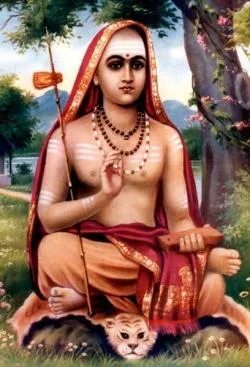
Soundarya Lahari by Shankara
SOUNDARYA LAHARI - by SRI ADY SHANKARA ( HYMN TO MAHA TRIPURA SUNDARI )
Soundarya Lahari has as author Sri Adi Shankara, one of the most versatile philosophers especially in Sakta tradition. Besides numerous commentaries and hymns, Shankara propounded advaitha (non-dualism) philosophy which paved the way to the revival of Hinduism. Born at Kaladi, a small pastoral village in Kerala, in a Namboodiri family he was excommunicated from the community by orthodox elders as he did not tow in their lines. It is said that they even boycotted the funeral of his mother. He mastered Sanskrit which is considered as the language of Devas and in which all Vedas and Upanishads are written and acquired profound knowledge in different fields that led to his ascension to Sarvanjnapeedham, the Throne of Supreme Knowledge.
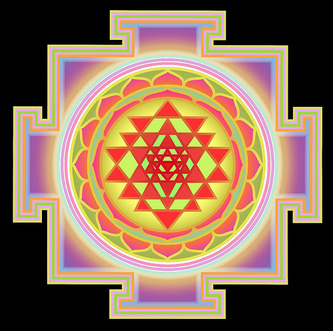
There is a school of thought who beleives of Soundarya Lahari as quasi-divine and gives Shankara the credit of transmitting this wonderful work to mankind only. The story goes like this. Shankara, during his stay in Varanasi, transported himself to Kailasa, the abode of Lord Siva and on the walls he found this highly esoteric hymn was written. As he began to read the poem, Ganesha, son of Lord Siva began to erase from below as this hymn was too holy to be publicised among mortal and the great saint could read only first forty one verses. Shankara added another fifty nine verses to it to make a collection of 100 verses. There is marked difference between the two sets of verses. The first forty one verses, generally referred to as Ananda Lahari, deal exhaustively with Mantra, Tantra, and Yantra and are highly philosophical and mystic in nature. The latter 59 verses which form the actual Soundarya Lahari (Inundation of Beauty) describe the form of Mother utilising almost all figure of speeches in Sanskrit literature. The entire 100 Slokas are referred as Soundarya Lahari.
There are, of course, some differences of opinion regarding the authorship of this Text. But the metaphysical incongruity which runs through out 100 Slokas of Soundarya Lahari gives no room for suspicion of great Shankara’s authorship of this divine text. There are more than 35 commentaries in Sanskrit on Soundarya Lahari by eminent scriptural exegetics. And it is amply evident from this fact that the text originated from universally venerated and accepted authority.
Like Lalitha Sahasra Naama and Durga Saptha Sati, Soundarya Lahari also full of mantras with attached Yantra. Every mantra is for the attainment of a particular wish, for example, verse 17 is for acquisition of knowledge, verse 33 for acquisition of wealth etc. The ritual recitation of the verse converts it to a very potent mantra, if recited a precisely numbers of times ( from 1000 times daily, to 3000 times for a long period of time. Therefore, among Kaulas, Soundarya Lahari is an important Text. There are two variations in Sakti worship, namely, Kaula and Saamayin. Kaulas worship Mother on Sri Chakra and other symbols and do external Pooja where as worship of Saamayika is internal (daharaakaasa) raising Kundalini from Mouladhara to Sahashrara . Both type of worships are acceptable, as there references to these in Lalitha Sahasra Naama (samyaachaarathtpara, kaulamargathatpara sevitha)
Contents
I will give only skeletal account of contents of Soundarya Lahari as a detailed one covers at least a thousand pages and still at loss of words. As told earlier, first forty one verses cover the detailed account of internal worship of the Mother which Saamayins follow. It consists of systematic exposition of the concept of kundalini, Sri Chakra, mantras (verses 32 , 33). This depicts the Supreme Reality as non-dual but with a distinction between Siva and Sakti, the power holder and Power, Being and Will. In Sakta philosophy, the Power, that is, the Mother or Maha Tripura Sundari becomes the dominant factor and the power holder or Siva becomes a substratum. The first verse itself clearly describes this idea. “United with Sakti, Siva is endowed with power to create; or otherwise, he is incapable even of movement.” The same idea is brought out in verse 24, “Brahma creates the universe, Vishnu sustains, Rudra destroys, and Maheswara absorbs every thing and assimilates into Sadasiva. On receiving mandate from thy creeper like brows, Sadasiva restores everything into activity as in the previous cycle.” Such dominance of the Mother can be cited in verses 34 and 35 also.
This dominance is very conspicuous in Uttara Kaula image of Kali where Sakti is shown as very symbol of power and energy, where Kali stands on the chest of inert form of Siva as the destroyer and consumer of whole universe. In contrast, in Soundarya Lahari, the Mother assumes purely creative role in the form of Maha Tripura Sundari , the supreme Divine Beauty of Three Puras or Bindus. See the verse 8: “Fortunate indeed are the few , who adore Thee, the Inundation of Bliss-Consciousness as abiding on the mattress that is Paramasiva spread on a couch, which is again an aspect of Siva, paced in a chamber of wish yielding gems amidst a Nipa pleasure-garden in Manidweepa situated in Nectar Ocean fringed by rows the celestial Kalpaka Trees”. The four legs of the couch are Brahma, Vishnu, Rudra, and Iswara and Siva himself the couch. The four along with Siva are called Pancha Pretha, i.e., Five Inert.
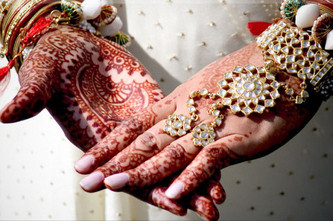
We were speaking about the dominance of Sakti over Siva in Soundarya Lahari so far, but there are certain verses which clearly show the equality of Prakrithi and Purusha that is Sakti and Siva in certain verses as per Saamayika worship. This can be cited in 6 verses starting from 36th where meditation of Mother in six plexus (kundalini) is detailed: Parasambhunatha and Chit Paraamba in Ajna Chakra, Hemeswara and Hemeswari in Anahatha Chakra, Vyomeswara and Vyomeswari in Visudhi Chakra samavatheswara and Samayamba in Swaadhistaana Chakra, Megheswara and Soudamini in Manipoora Chakra, and Adinath and Lasyeswari in Muladhara Chakra.
We have already discussed the Saamayin and Kula systems of worship earlier. Soundarya Lahari encourages both types with a tilt towards the former. But Laxmidhara, a noted votary of Saamayikaachaara strongly refutes Kaula System on the basis if Verse 31 which runs like this:” Siva deceived and deluded the world by giving out 64 other Tantras, which expound practices of conferring only one or another of the various psychic powers and worldly fulfilments. So on Thy special insistence He revealed this, Thy own Thantra, to world independent of all others and capable of conferring all the Purusaharthas- Dharma, Arttha, Kama, and Moksha, by itself on the votaries”. Laxmidhara holds that all 64 Tantras are intended to acquire some particular powers only, unclean and cruel practised by Kapalikas, Digambaras, Kshapanakas, etc and only Vamakeswara Thantra is to be put in to practice. This view is strongly condemned by many weighty authorities on the ground that Laxmidhara’s views are prejudiced.
Further, there are certain mantras like Verses 13, 15, 16, 17, 18, 19 and 20 in Soundarya Lahari which are used for attracting opposite sex. One may wonder how such mantras are incorporated to such a mystic and philosophical treatise. We have already seen the Mother as maya or avidya and the same is one her aspects. In Soundarya Lahari, we visualise her as the creator. She bestows all purusharthas and kama or desire is one of them. First and second verses of the text reveal the Mother’s all pervading and omnipotent form as Maha Tripura Sundari . Verses 3,4,5,6, 7, 8, 20, and 22 explain sagunopasana (external worship) which Kaulas adopt. 27th verse reveals the internal worship (nirgunopasana) which accomplished devotees do. Details of worship on Sri Chakra in 11th, with mantras in 31st, 32nd verses, kundalini in 9th, 10th, 14th and 21st verses, Sri Devi Mahaathmyam in verses 12th, 24th, 25th, 26th, 28th and 29th verses. Verses from 36 to 41 give a clear and explicit picture of Samyaachara worship. Among these verses, some authorities are of the opinion that verses 1, 2, 8, 9, 10, 11, 14, 21, 26, 27, 31 to 41 are the most important mantras in Soundarya Lahari. Of course, these mantras are very important, but the rest of them are not less important in potency.
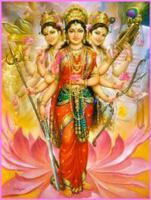
Philosophical and metaphysical treatise is abundant in Soundarya Lahari, especially in first 41 verses which make this text more than a hymn. Apart from this, Soundarya Lahari is a veritable conglomeration of poetic tendencies. So beautiful they are, each verse will convert your heart and mind into a receptacle of noble ideas and thoughts caress your sense and sensibilities. Sri Shankara has put his versatile genius in every verse, like a sculptor carves out tiniest details of an image. See some examples:
“Bhavaani thwam daase mayi vthara dristim sakarunaam…….” Verse 22
“Japo jalpah shilpam sakalam api mudraa virachana………… ” Verse 27
“Dadaane dinebhyah sriyam anisam aasaanusadrisim”……… ” Verse 90
You have to read each verse yourself. If you are not familiar with Sanskrit, get a good detailed translation. Study only two Slokas a day. Churn them in your in your heart. Your mind will be immersed in indefinable divine pleasure. Experience it yours self and lead yourself to immense spiritual bliss. Every thing is there you wanted to know.
References: Principles of Tantra by Arthur Avlon, Kathyayani Tantra, Soundarya Lahari (Inundation of Beauty) by Sri Ramakrishna M.,Various Translations of Soundarya Lahari in English.
YOGA ARTICLES


